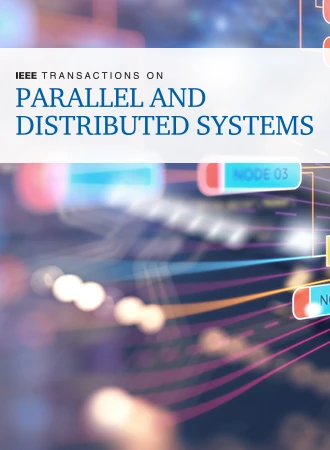Swift: Expedited Failure Recovery for Large-Scale DNN Training
IF 5.6
2区 计算机科学
Q1 COMPUTER SCIENCE, THEORY & METHODS
IEEE Transactions on Parallel and Distributed Systems
Pub Date : 2024-07-18
DOI:10.1109/TPDS.2024.3429625
引用次数: 0
Abstract
As the size of deep learning models gets larger and larger, training takes longer time and more resources, making fault tolerance more and more critical. Existing state-of-the-art methods like CheckFreq and Elastic Horovod need to back up a copy of the model state (i.e., parameters and optimizer states) in memory, which is costly for large models and leads to non-trivial overhead. This article presentsSWIFT:大规模 DNN 训练的快速故障恢复
随着深度学习模型的规模越来越大,训练需要更长的时间和更多的资源,容错变得越来越重要。现有的最先进方法(如 CheckFreq 和 Elastic Horovod)需要在内存中备份模型状态(即参数和优化器状态)的副本,这对于大型模型来说成本很高,而且会导致不小的开销。本文介绍的 Swift 是一种用于分布式深度神经网络训练的新型恢复设计,它能在不影响训练吞吐量和模型准确性的情况下显著降低故障恢复开销。Swift 不需要额外复制模型状态,而是解决故障导致的模型状态不一致问题,并利用数据并行性中的模型状态副本进行故障恢复。当副本不可用时,我们提出了一种基于日志的方法,该方法记录中间数据并重新计算,以便在故障发生时恢复丢失的状态。重新计算分布在多台机器上,以进一步加快故障恢复速度。我们还选择性地记录中间数据,探索恢复时间与中间数据存储开销之间的权衡。评估结果表明,与最先进的方法相比,Swift 显著缩短了故障恢复时间,并在无故障执行期间实现了类似或更好的训练吞吐量,同时不会降低最终模型的准确性。与最先进的方法相比,Swift 的总训练时间最多可加快 1.16 倍。
本文章由计算机程序翻译,如有差异,请以英文原文为准。
求助全文
约1分钟内获得全文
求助全文
来源期刊

IEEE Transactions on Parallel and Distributed Systems
工程技术-工程:电子与电气
CiteScore
11.00
自引率
9.40%
发文量
281
审稿时长
5.6 months
期刊介绍:
IEEE Transactions on Parallel and Distributed Systems (TPDS) is published monthly. It publishes a range of papers, comments on previously published papers, and survey articles that deal with the parallel and distributed systems research areas of current importance to our readers. Particular areas of interest include, but are not limited to:
a) Parallel and distributed algorithms, focusing on topics such as: models of computation; numerical, combinatorial, and data-intensive parallel algorithms, scalability of algorithms and data structures for parallel and distributed systems, communication and synchronization protocols, network algorithms, scheduling, and load balancing.
b) Applications of parallel and distributed computing, including computational and data-enabled science and engineering, big data applications, parallel crowd sourcing, large-scale social network analysis, management of big data, cloud and grid computing, scientific and biomedical applications, mobile computing, and cyber-physical systems.
c) Parallel and distributed architectures, including architectures for instruction-level and thread-level parallelism; design, analysis, implementation, fault resilience and performance measurements of multiple-processor systems; multicore processors, heterogeneous many-core systems; petascale and exascale systems designs; novel big data architectures; special purpose architectures, including graphics processors, signal processors, network processors, media accelerators, and other special purpose processors and accelerators; impact of technology on architecture; network and interconnect architectures; parallel I/O and storage systems; architecture of the memory hierarchy; power-efficient and green computing architectures; dependable architectures; and performance modeling and evaluation.
d) Parallel and distributed software, including parallel and multicore programming languages and compilers, runtime systems, operating systems, Internet computing and web services, resource management including green computing, middleware for grids, clouds, and data centers, libraries, performance modeling and evaluation, parallel programming paradigms, and programming environments and tools.
 求助内容:
求助内容: 应助结果提醒方式:
应助结果提醒方式:


